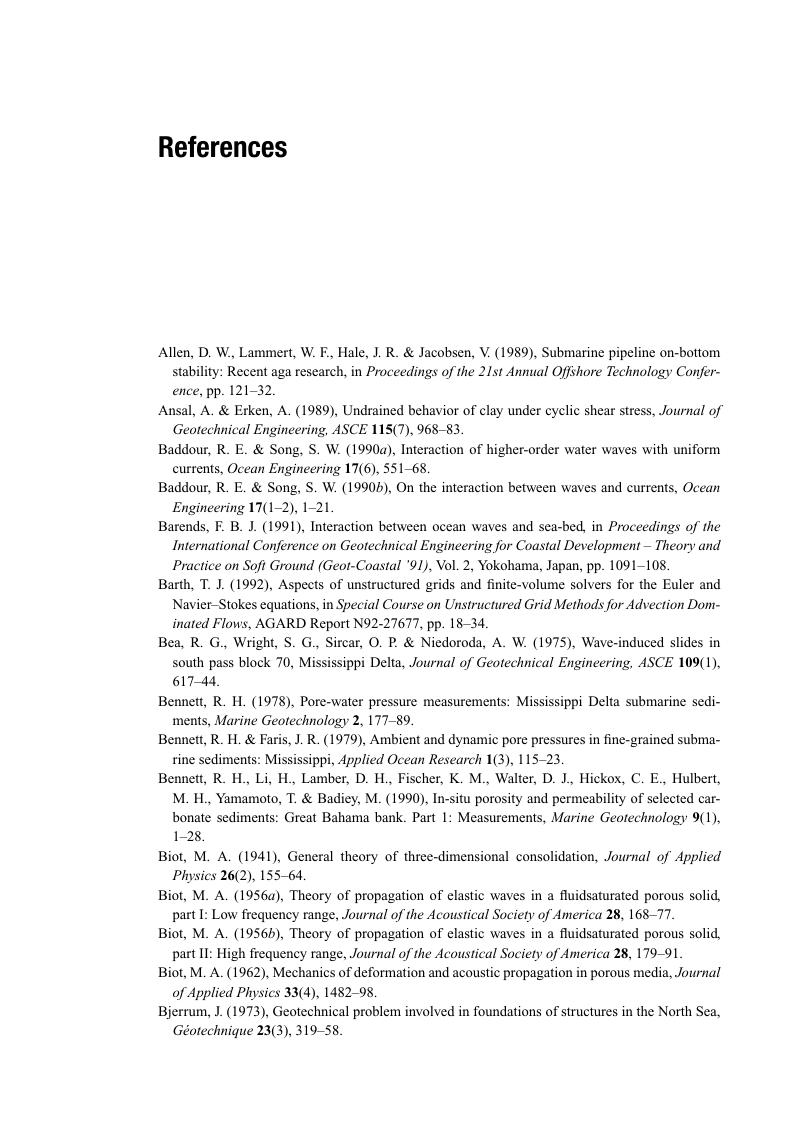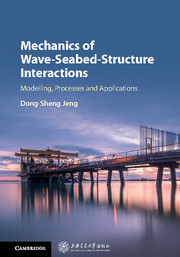Book contents
- Frontmatter
- Contents
- Preface
- 1 Overview
- 2 Basic Seabed Mechanisms
- 3 Soil Response in Marine Sediments under Combined Loading of Waves and Currents
- 4 Integrated Model of Wave-Seabed Interactions around Caisson-Type Breakwaters
- 5 Mechanics of Wave-Seabed-Pipeline Interactions
- 6 Three-Dimensional Model of Wave-Seabed Interactions around Breakwater Heads
- 7 Seabed Instability around Offshore Wind Turbine Foundations
- 8 Physical Modelling: One-Dimensional Compressive Tests
- Appendix A Analytical Solution for a Seabed of Finite Thickness (Hsu & Jeng 994)
- Appendix B Derivation of u–p Approximation (Jeng et al. 1999)
- Appendix C Derivation of u–U Approximation (Cha et al. 2002)
- Appendix D Mathematical Derivations of Analytical Solutions for Residual Soil Response (Jeng et al. 2007)
- Appendix E Mathematical Model of the Two-Layered Viscous Fluid System (Liu et al. 2009)
- References
- Author Index
- Subject Index
- References
References
Published online by Cambridge University Press: 28 April 2018
- Frontmatter
- Contents
- Preface
- 1 Overview
- 2 Basic Seabed Mechanisms
- 3 Soil Response in Marine Sediments under Combined Loading of Waves and Currents
- 4 Integrated Model of Wave-Seabed Interactions around Caisson-Type Breakwaters
- 5 Mechanics of Wave-Seabed-Pipeline Interactions
- 6 Three-Dimensional Model of Wave-Seabed Interactions around Breakwater Heads
- 7 Seabed Instability around Offshore Wind Turbine Foundations
- 8 Physical Modelling: One-Dimensional Compressive Tests
- Appendix A Analytical Solution for a Seabed of Finite Thickness (Hsu & Jeng 994)
- Appendix B Derivation of u–p Approximation (Jeng et al. 1999)
- Appendix C Derivation of u–U Approximation (Cha et al. 2002)
- Appendix D Mathematical Derivations of Analytical Solutions for Residual Soil Response (Jeng et al. 2007)
- Appendix E Mathematical Model of the Two-Layered Viscous Fluid System (Liu et al. 2009)
- References
- Author Index
- Subject Index
- References
Summary

- Type
- Chapter
- Information
- Mechanics of Wave-Seabed-Structure InteractionsModelling, Processes and Applications, pp. 332 - 351Publisher: Cambridge University PressPrint publication year: 2018



